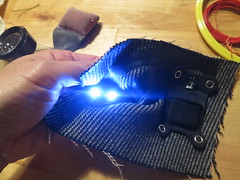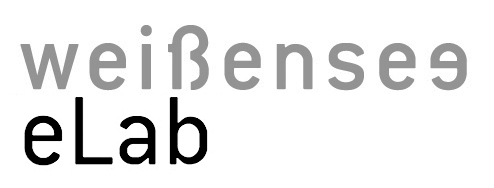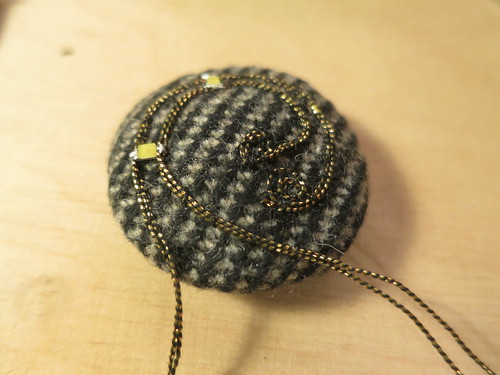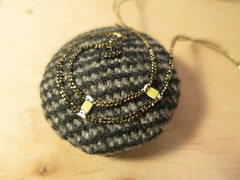When making eTextile circuit, the solder joint between hard component and conductive textile material tend to break as it get the most strain from flexing. To avoid this, the whole circuit can be placed on a fabric button so that it does not get bent. Here is the test LED embroidery circuit on a fabric button.
For electrical connection, I am using 25% Metal Egypto Color Gold Gimp thread from Bart and Francis. This thread has metal tape wrapped around core thread. It is possible to solder directly onto this thread at the metal tape points. The metal thread is placed on the base fabric with couching stitch.
Now I connected Lipo battery, and bent, scrunched, flapped, scratched… but it seemed to be ok. It feels quite robust.





















Leave a comment